We may earn income from links in this post. Please read this Disclosure for details.
Planning to explore Atlantic Canada? If you’re a food enthusiast who loves culture and outdoor adventure, you’re going to want to put Cap-Pelé, New Brunswick at the top of your list.
Its distinct Acadian culture, bounty of fresh seafood and string of sandy beaches offer a magical mix of Maritime experiences.

We spent several days in the area as part of a summer road trip from Toronto and fell in love with this welcoming community.
I’m sure you will too. Here’s what to expect!
Location
Cap-Pelé, Beaubassin-Est, and Shediac are a group of Acadian communities that form Cap Acadie, a municipality in southeastern New Brunswick, Canada.
Set along the coast facing the Northumberland Strait, Cap-Pelé itself is a 1.5 hour drive to Tatamagouche, Nova Scotia, 1.5 hours to Charlottetown, Prince Edward Island, 2.5 hours to Halifax and 4 hours to Digby, Nova Scotia.
The central location is ideal for exploring the broader Maritime region.
If you’re coming from Quebec, it’s a 5 hour drive from Temiscouata Sur le Lac, Quebec (a fabulous lakeside stop) on the Trans-Canada Hwy.
For touring within New Brunswick you’re only 30 minutes to Moncton and one hour to Hopewell Rocks Provincial Park on the Bay of Fundy.
Despite this proximity, the region feels wild, remote and authentic.
Here’s our guide to the top attractions, restaurants and things to do in and around Cap-Pelé.
1. Soak Up the Sun at Aboiteau Beach

Fringed by pillowy sand dunes and marram coastal grass, Aboiteau Beach (Google Map) is the best beach in Cap-Pelé, offering soft cinnamon-hued sand and the warmest water north of the Carolinas.
It’s an ideal place to spend the day swimming, sunbathing or simply walking along the tidal pools. You can witness the dramatic tides of the Northumberland Strait, which create an ever-changing landscape along the coast.
While at Aboiteau Beach we had the opportunity to chat with Justin LeBlanc the Director of Tourism for the Cap-Acadie municipality. He filled us in on the many initiatives the community and government are undertaken to preserve this valuable eco-system.

Regular water quality testing, replanting of the beach grass and protection of endangered species, wheelchair ramps, litter management and a new glamping experience are just a few of the many innovative things on the go.
Learn more at the official Plage Aboiteau website.
2. Feast on Local Seafood

If you’re spending the day at Aboiteau Beach, you don’t have to go far to indulge in a feast of fresh seafood. The onsite Restaurant a la Dune‘s menu features a wide variety of ocean-fresh seafood as well as burgers, chicken and of course, lobster rolls.
For a true taste of the Maritimes opt for the deep-fried bar clams, clams, scallops or shrimps. Or go for a platter brimming with an assortment of clams, shrimps, scallops and fish.
The Dune Restaurant’s gigantic servings might look daunting but trust me, the crispy tempura-like coating on the clams and scallops pairs so perfectly with their tender, ocean-fresh flavour, you won’t be able to stop at a few.
Dining here is a simple yet satisfying seafood experience, especially while taking in the beach views.
Restaurant a la Dune is open from 11:00 a.m. to 8:00 p.m. daily from the first Friday of June until the Labor Day weekend. Check hours here.
3. Sip Some Local CAVOK Craft Beer

Sip a lager at CAVOK Brewing Co., a local brewery that has quickly gained a reputation for its exceptional craft beers.
While the name CAVOK might sound like the name of a villian from a Marvel comic, it’s actually an aviation acronym of ceiling and visibility [are] OK. This reflects the owners’ former careers as air traffic controllers.
Whether you prefer a crisp lager, a hoppy IPA, or a rich stout, there’s something on tap for every beer lover. Most of the 20 products on tap are crafted at CAVOK but there are several produced by craft breweries from around New Brunswick.
CAVOK has two locations: one in Dieppe (Google Map) and another at Aboiteau Beach (see above). The beachside location is the perfect spot to unwind after a day of exploring the tides.
4. Learn About Traditional Herring Smokehouses at the Herring Museum

One of the biggest thrills for us while visiting New Brunswick was learning more about the fishing industry. From Brunswick sardines to lobster, its waters are rich in marine life.
In Cap-Pelé, we were introduced to the smoked herring industry by Anthony Azard, CEO of the Cap-Acadie Chamber of Commerce.
Cap-Pelé’s history is deeply intertwined with the fishing industry, particularly Atlantic herring. In spring, the waters of the Northumberland Strait are one of the major spawning shoals for herring.
As far back as the 1840s Acadian families had backyard smokehouses (boucanières) where they salted and smoked the catch using techniques from France influenced by aboriginal practices.
Much as with salting cod, it was done to preserve the food supply for home use. By the early 1900s it had become a commercial activity.

Today there are over 20 smokehouses in the Cap-Pelé area producing 95% of Canada’s smoked herring.
Traditional Smoking Practices
The Acadian traditional smoking methods, emphasizing natural wood smoke and processes, enhances the fish’s natural taste.

First, the fish must be salted and soaked in brine for 5-7 days. Then the herring is strung on long poles called “cannes” and hung in smokehouses over low fires of hard wood and sawdust.

It’s carefully tended by an expert who “holds the secret of the fire.” After smoking, the herring is then removed from the poles and packed in wood crates for shipping.

Most is exported to the Caribbean. There, it’s enjoyed in the traditional dishes of Dominican Republic such as locrio de arenque as well as typical foods of Martinique, Grenada, Haiti, Jamaica, and St. Lucia.

Smokehouse Museum
While we were fortunate enough to witness this process firsthand at a local smoke house, visitors can learn about this important Acadian ancestral tradition at the Smokehouse Museum (Musée de la Boucanière) on Acadie Road (Google Map).
One of the top attractions in Cap-Pelé, the museum is home to fascinating exhibits on the history of the herring smokehouses that dot the coastline, providing insight into the community’s cultural and economic heritage.
The museum also serves as a Tourist Centre and has a kiosk with information as well as a bistro and outdoor picnic area.
5. Try Your Hand at Cooking Smoked Herring

After visiting the Herring Museum, why not do as we did and pick up some smoked herring and try your hand at cooking it up?
Smoked herring is enjoyed around the world and can be used in a variety of recipes, from dip to stews. It’s a popular ingredient in traditional dishes in the Dominican Republic, Jamaica, Haiti and Martinique.
Our easy (just 15 minutes from start to finish) recipe for Creamy Smoked Herring Dip is a delicious way to bring the flavours of Cap-Pelé into your own kitchen.
In Cap-Pelé, New Brunswick, you can buy smoked herring fillets at the Marché au Corner Market Freshmart on Acadie Road (Google Map). It’s also a top place to pick up some local maple syrup and road trip snacks.
6. Admire the Stained Glass Windows at Ste-Thérèse d’Avila Church

As you drive through Cap-Pelé, along Acadie Road, it’s impossible to miss Ste-Thérèse d’Avila church (Google Map).This landmark is not just a place of worship but it’s also an impressive piece of modern architecture.
Its design, resembling an inverted herring boat, pays homage to the village’s fishing heritage. Inside, stained glass windows illuminate the space with colourful, ethereal light.
Created by Schella Glass Studio of Moncton — artisans whose work appears throughout Atlantic Canada as well as the Caribbean — the Tiffany-style windows are among the largest in the Maritimes.
Catholic services are conducted in French, English, Tagalog and Spanish as the congregation is composed of seasonal workers who come to work in the factories during herring season.
The church is a must-see for history enthusiasts and art lovers alike.
7. Dine on Upscale East Coast Specialties at Resto 577
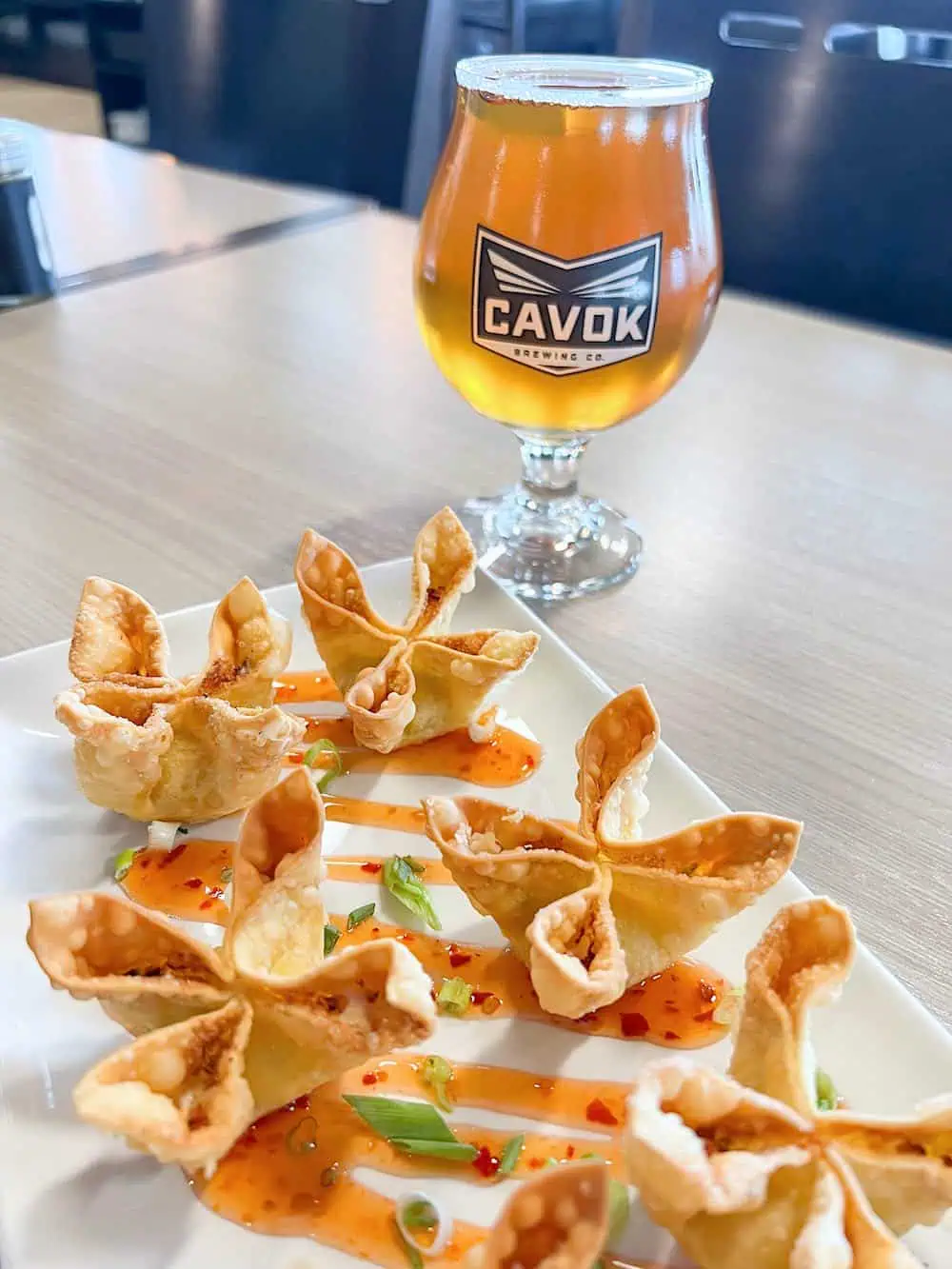
For a memorable dining experience in Cap-Pelé, head to Resto 577 (Google Map).
This new addition to the local dining scene offers an elevated take on classic East Coast cuisine, blending tradition with global influences.
Open for lunch and dinner, there’s lots to choose from on the extensive menu.
Fried bar clams and seafood platters are always popular but daily specials such as honey garlic poutine with maple aioli also make enticing options.
We were thrilled with our choices of crab rangoon, the crabatizer (crab claws with garlicky dip) and lobster roll.

Whether you’re craving seafood, steak, or something a bit more adventurous, Resto 577 has something to satisfy every palate.
Check the Resto 577 Facebook page for specials and news.
8. Go on a Llama Beach Walk with Llama-zing Adventures

For a truly unique experience, book a llama beach walk with Llama-zing Adventures.
For around an hour and a half you’ll stroll (and sometimes run) along the scenic shores of Petit Cap with a friendly llama or alpaca by your side, taking in the fresh sea air and stunning coastal views.

It’s a fun and memorable way to connect with nature and make a new four-legged friend!
After your walk, you’ll even get to feed your hiking pal!
🌟 Check out our video of what it’s like to go on a Llama Beach Walk on Instagram!
9. Snap a Photo with the Giant Lobster in Shediac

From the Big Apple to the Pisces Pete in Hastings, we can’t resist a roadside stop at kitchy landmark.
So, there was no way we were leaving Cap Acadie without making a stop at the Giant Lobster in Shediac, the self-proclaimed “Lobster Capital of the World.”
A short drive from Cap-Pelé, this quirky sculpture is a popular attraction for photo-ops and a fun way to commemorate your trip to the region. It’s a must-do for families.
Climb up onto the lobster’s back for a memorable souvenir photo.
10. Feast on Steamed Lobster

No visit to Cap-Pelé is complete without indulging in the region’s most famous dish: steamed lobster.
New Brunswick has two main lobster seasons. The first one is in the spring, usually from April to late June or early July, depending on where you are. It covers areas like the Northumberland Strait and parts of the Gulf of St. Lawrence.
Then, there’s the fall season, which runs from mid-August to mid-October, mostly along the Bay of Fundy and the southern coast.

These seasons help keep lobster populations healthy and thriving, so you can enjoy fresh lobster year after year.
In comparison to other places we’ve visited where lobster was sometimes hard to find, there were lots of places to enjoy lobster in and around Cap-Pelé and Moncton.
From lobster shacks in Alma to fine-dining, New Brunswick lobster is some of the best lobster I’ve ever eaten.
It’s just as tasty as the lobster I swooned over in Digby, Nova Scotia. It has a sweet, succulent flavour with a delicate brininess that reflects the cold, clean waters it comes from.
🌟 Pro Tip: Try our recipe for Creamy Lobster Fettuccine featuring Atlantic lobster.
11. Shop for Artisanal Chocolates at Adorable Chocolat

Also located in Shediac, locally-owned and operated Adorable Chocolat (Google Map) is a must-visit for those with a sweet tooth. The decor will also be of interest to fans of the fantastical world of Alice in Wonderland.
Under the guidance of master chocolatier Frédéric Desclos, this artisanal chocolatier crafts chocolates that are as beautiful as they are delicious.
From hand-painted truffles to sugar-free Dark Chocolate, pralines, creamy hot chocolate and more, there are lots of enticing treats to choose from.
Don’t forget to pick up a box of chocolates to enjoy later or as a gift for someone special.
🌟 Pro Tip: Don’t miss dining at Bistro Le Moque-Tortue in downtown Shediac. In addition to its Happy Hour specials and popular Sunday Brunch, the creative menu is packed with fresh options such as lobster-mango salad, seafood chowder and crepes. The Acadian Meat Pie, similar to a tourtière, comes served with beautiful sun-dried tomato pasta salad.
12. Immerse Yourself in French Acadian Culture

Throughout your visit to Cap-Pelé and its surroundings, you’ll be immersed in the rich French Acadian culture that defines the region. You’ll often see the Acadian flag on display.
Who are the Acadians? They’re descendants of French settlers who arrived in the Maritime provinces, eastern Quebec and Maine during the 17th and 18th centuries, developing a unique culture that blends French, Indigenous, and other influences. After the Expulsion of the Acadians by the British, many fled (some to Louisiana) and others went into hiding.
Today, Acadians represent about one-third of the population in New Brunswick, contributing to the province’s bilingual status.
While we were in Cap-Pelé, we had the opportunity to sample some traditional Acadian dishes including poutine râpée (a round dumpling with pork), fricot (a hearty meat soup), rappie pie (grated potato casserole), tarte au sucre, all reflecting their rich culinary heritage.
Everything from the food to the architecture, the language to the traditions, offers a glimpse into the vibrant history and heritage of the Acadian people.
Final Thoughts on Cap-Pelé, New Brunswick
Whether you’re exploring the herring museum, dining at a local restaurant, or simply chatting with locals, you’ll feel the warmth and pride of this unique community.
Cap-Pelé, with its coastal beauty, culinary delights, and deep-rooted traditions, offers a truly authentic New Brunswick experience. It’s one that will stay with you long after you leave.
So pack your bags, bring your appetite, and get ready to explore one of the Maritimes’ hidden gems!
Getting There and Around

Château Moncton Hotel & Suites: It’s a 30-minute drive from Cap-Pelé to Château Moncton, an upscale hotel set on the banks of the Petitcodiac River a short walk to downtown Moncton.
We really enjoyed our stay at this Moncton hotel. In addition to the full breakfast, riverview rooms, free parking and prime location on the walking and cycling riverside trail, it’s a prime spot for viewing the natural phenomenon of the tidal bore.
The tidal bore is a natural phenomenon where the Bay of Fundy’s powerful tides force a wave of water up the Petitcodiac River, reversing its flow. The wave can be so large it can even be surfed!
Check rates and availability of Château Moncton on Booking.com
Le Griffon (Shediac): For an elegant stay in the heart of Shediac, Le Griffon Bed and Breakfast is a romantic option for couples. This historic home is near Pascal Poirier Park (home to Atlantic Canada’s largest weekly outdoor market) as well as restaurants, boutiques, galleries and cafés.
Check rates and availability of Le Griffon Bed and Breakfast on Booking.com.
Destination Moncton-Dieppe: Get trip and event ideas at www.destinationmonctondieppe.ca
Tourism New Brunswick: Get maps and plan your travel at https://tourismnewbrunswick.ca
Cap Acadie: There’s a wealth of information about community markets, motosports and other attractions on the official Cap Acadie website.
Car Rentals: You’ll need a car to get to Cap-Pelé. It’s an easy 30 minute drive from Château Moncton.
We rent our cars on Discovercars.com. It’s an online car rental booking site that compares rates from several companies to find the best deal.
More Eastern Canada Food and Travel Inspiration
Save to Pinterest!

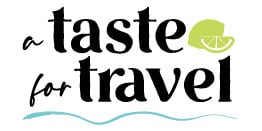

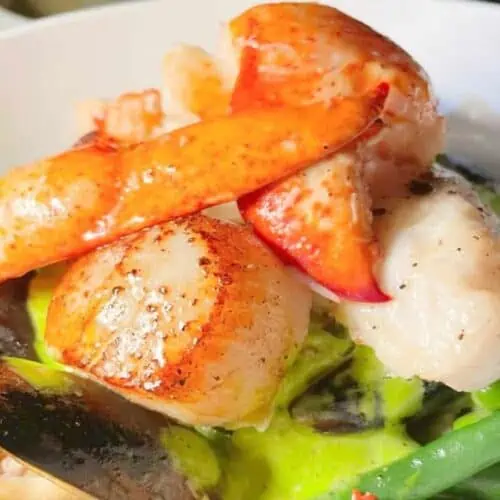
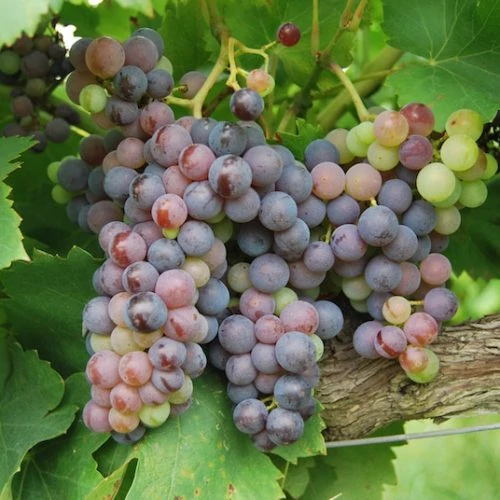
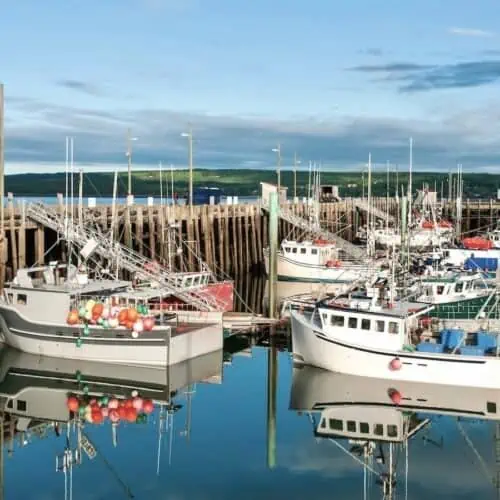

 Best Beach Clubs (With Swimming Pools) in Puerto Escondido
Best Beach Clubs (With Swimming Pools) in Puerto Escondido
Cindy Ladage
I love the museums, how cool, and ohhh the lobster!
Culturetripper
I’ll be printing this post! My husband and I have long been planning a trip to the Maritimes and appreciate that you included driving times to other locations. The variety of fresh seafood available in Cap Pele sounds amazing, and we’d love to stroll on a beach with Kevin and Steve. I’d be very interested in the church shaped like an upside-down boat, too. Great post!